Energy Efficiency and Cost Savings of DIY EV Conversion
By Sebastian Orellana
Updated Feb 17, 2024
This comprehensive guide delves into the intriguing world of Do-It-Yourself (DIY) Electric Vehicle (EV) Conversion. We'll start by explaining DIY EV conversion and its science before moving into a step-by-step guide to the conversion process. We discuss the primary components involved, including the EV conversion kit and the electric motor. We'll also investigate the cost analysis, providing a comprehensive picture of the financial implications.
Table of Contents
We'll then shed light on the energy efficiency of DIY EV conversions and how they can save you money. We also touch on potential safety concerns and provide real-world examples of successful conversions, concluding with predictions for the future of DIY EV conversions. This article is your ultimate guide if you're considering a switch to an electric vehicle and love a good DIY project.
READ: Best Electric Motorcycles Of 2023
Understanding DIY EV Conversion
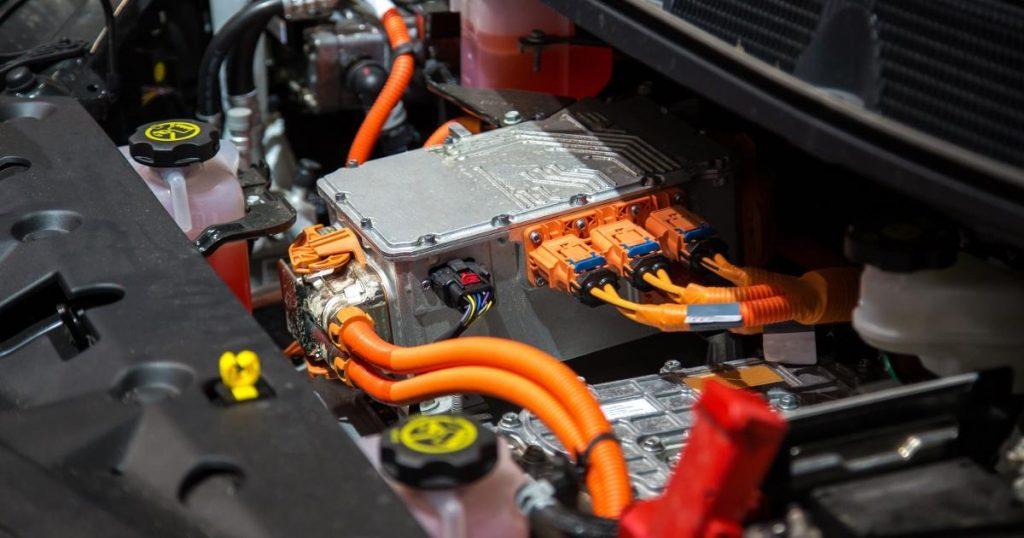
Electric vehicles (EVs) have become more popular over the last decade. With this increased attention comes the desire from many car enthusiasts, engineers, and environmentalists to convert their regular gasoline or diesel vehicle into electrically powered ones. DIY EV conversion is when a traditional gas or diesel vehicle is converted to run on electric power.
There are many reasons why people choose to do this. For some, it's an environmental choice - EVs produce zero emissions at their point of use and are, therefore, seen as a greener option. Others are interested in the engineering challenges and creativity that converting a vehicle can provide. It's also increasingly becoming a financial decision, as running an EV can be significantly cheaper than running a gasoline or diesel vehicle once the conversion occurs.
Definition and Basic Overview
DIY EV conversion involves removing the internal combustion engine from a vehicle and replacing it with an electric motor. The fuel tank, exhaust system, and many other parts are also removed to make way for the new motor and its associated controls.
The EV conversion kit is installed once the old engine and associated parts have been removed. This kit includes not only the electric motor itself but all of the necessary controls and other equipment to connect the motor to the vehicle's existing transmission and electrical systems.
Converting a vehicle to electric power is not a task for the faint-hearted. It requires a certain level of mechanical and electrical knowledge and a lot of time and patience. But it can be a rewarding and satisfying project for those with the necessary skills and resources.
The Science Behind DIY EV Conversion
The science behind DIY EV conversion is essentially the science of electric cars. At its most basic, an electric vehicle is simply a vehicle propelled by one or more electric motors, using energy stored in rechargeable batteries.
The main parts of an EV are the electric motor, the battery, the controller, and the charger. The engine powers the vehicle and is connected directly to the wheels or to the existing transmission in the case of a conversion. The battery stores electrical energy that is used to power the motor. The driver uses the controller to control the motor, essentially taking the place of the gas pedal in a traditional vehicle. And the charger is used to recharge the battery.
Potential Benefits and Downsides
Performing a DIY EV conversion has several potential benefits. First and foremost, it can be an environmentally friendly choice. Electric vehicles produce no tailpipe emissions, meaning they do not contribute to air pollution or global warming like gasoline or diesel vehicles.
Another potential benefit is the cost savings from driving an EV. While electricity is not free, it is typically much cheaper than gasoline or diesel. So once the initial cost of converting a vehicle has been recouped, running an EV can be less expensive than running a traditional car.
However, there are also potential downsides to consider. One of the biggest is the upfront cost. While the long-term costs can be lower, the initial cost of purchasing an EV conversion kit and the associated parts can be quite high. Additionally, converting a vehicle to electric power can be complex and time-consuming. It requires a certain level of mechanical and electrical skill, as well as a lot of time and patience. There is also the issue of battery range.
While this constantly improves, many converted EVs still have quite limited ranges compared to their gasoline or diesel counterparts. This can limit their usefulness for long trips. Every car enthusiast loves making their vehicle more personal, and for many, that involves adding a unique twist, like converting a standard vehicle into an electric car. Electric vehicles are not only eco-friendly, but they are also cost-efficient in the long run as they do not require gas to function.
READ: What is the Electric Car Battery Life Expectancy?
EV Conversion Kit
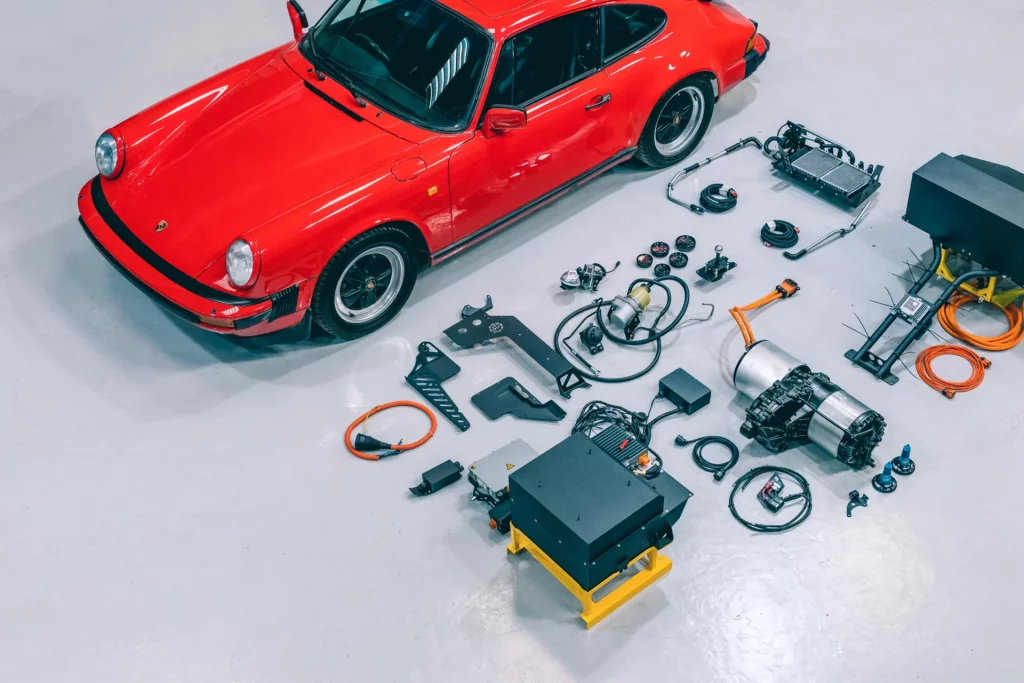
The first thing you'll need for a DIY conversion is an Electric Vehicle (EV) Conversion Kit. The kit usually has the required mechanical parts and systems to convert your car to electrical function. These kits are often sold based on the type, size, or model of the car. So this means a specialized kit for every car category is available.
The included components in the kit can vary depending on the manufacturer and type of car. Still, EV conversion kits commonly consist of plate adaptors, a throttle box, mounting brackets, power cables, a vacuum pump for power brakes, a controller harness, and other associated hardware. The kit essentially replaces the internal combustion engine with an electric one.
Electric Motor
The Very Soul of an electric vehicle is its electric motor. The electric motor is the component that propels the car forward. In traditional vehicles, this function is served by the Internal Combustion Engine (ICE). There are different types of electric motors, such as the AC (Alternating Current) motor and DC (Direct Current) motor.
The type of motor you choose can depend on several factors, such as the type of controller you're planning to use, the desired speed, and your budget, amongst many others. It's crucial to choose the right motor, and to have it fitted correctly, as this will greatly affect the performance of your converted electric vehicle.
Controller
The controller in an electric vehicle can be compared to the carburetor in a gasoline vehicle. The controller regulates and directs the electrical power from the battery to the electric motor. This results in the car moving at a desired speed. The more current you provide through the controller, the faster the motor and vehicle will move.
The controller works in tandem with the pot box to deliver a varying amount of power to the motor depending on the position of the throttle. Most people opt for flexible and efficient controllers, as these typically provide better performance and battery life.
Batteries
The heart of any electric vehicle lies in its batteries. These batteries store the electricity that is needed to power the vehicle. There are three main types of batteries widely used in EV conversions. These are the Lead-acid, Lithium-ion, and Nickel-metal-hydride batteries. Each has its pros and cons and will be chosen based on factors such as budget, desired range, and others.
The placement of the battery can significantly impact the weight distribution of the car, which could affect its balance and handling. Therefore, it is crucial to choose the correct type and number of batteries for your vehicle and install them in the proper place.
Chargers
Finally, we come to the chargers. Chargers are necessary to replenish the energy in your batteries. In EV conversions, chargers often come built into the vehicle. This portable device allows normal 120-Volt outlets to charge the car. Depending upon the type and capacity of the battery, the charging process could take a few hours to even more than a day.
In addition, fast chargers are also a popular choice, reducing the time taken to recharge the batteries significantly. Keep in mind it is always best to have a charger that is compatible with the power outlets in your house.
Step-by-Step Process of DIY EV Conversion
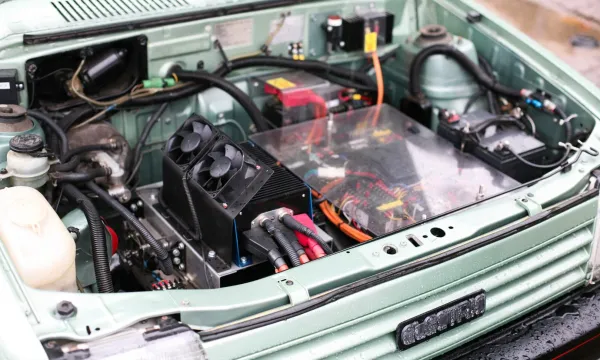
Converting a traditional vehicle to an Electric Vehicle (EV) entails removing the internal combustion engine from the vehicle and replacing it with an electric system that comprises of several components including an electric motor, a controller and battery packs. Some also choose to add a charger to the vehicle to draw power from grid electricity. A detailed step-by-step guide to converting a traditional vehicle into an EV follows.
Preparing the Vehicle
Preparing the vehicle is the first step in a DIY EV conversion project. This involves carefully removing the internal combustion engine, exhaust system, fuel tank, and in some cases, the gearbox as well, as these are no longer needed. In order to remove these, you'll require a good set of mechanical tools and the necessary safety equipment like gloves and goggles. After ensuring the vehicle is safe to work with, clean the engine bay thoroughly to ensure no clutter or unwanted particles. You'll want a clean, tidy space to install your new electric components.
Installation of the Electric Motor
The installation of the electric motor follows next. This is the heart of your electric vehicle and directly drives the drivetrain. The most popular choices of motors for DIY EV conversions are DC motors because they are cheap, easily available, and relatively simple to set up.
For a basic conversion project, you'll need a motor capable of delivering enough power to move your vehicle. The motor size you need will also depend on the weight of your vehicle and your desired driving range and speed. After projecting your requirements, purchase the right motor and fit it into the location of the old engine.
Controller and Battery Installation
The controller is another fundamental component of an EV. It acts as the moderator of power between the battery and the electric motor. Thus, the controller communicates with the driver inputs (how much you press the accelerator pedal) and provides the motor with the power it needs to move the vehicle. After installing the controller under the hood, the next step is to install the batteries. Depending on your vehicle's size and range expectations, you may need about 10-20 batteries. Most drivers opt for Lithium-ion batteries as they are high performing and long-lasting but slightly pricey.
Charger Installation and Wiring
The next step, and perhaps the most complex part of the conversion process, is the charger installation and the associated wiring. A good charger can ensure your batteries last as long as possible and lets you recharge your car from standard electrical power sockets. Rigorous wiring is essential for the functioning of an EV. The wiring process is quite complicated and requires a certain degree of skill. If you don't have the necessary experience, it's advisable to take help from a professional to ensure that everything is wired up safely and properly.
Final Checks and Test Drive
After meticulously following the abovementioned steps, the final steps involve performing checks and a test drive. Double-check your work, ensuring the wiring is sound, the motor and controller are securely mounted, and the battery packs are safely positioned and secured. Conduct functional tests like indicates, lights, brakes etc. to ensure they are still working properly. Finally, do a test drive in a safe, contained area. Start slowly and gradually increase your speed to ensure you haven't overlooked anything that could cause problems.
Listen for any unusual sounds or vibrations; if something doesn't feel right, stop to investigate further. This sums up a comprehensive DIY EV conversion process. Remember that converting a car into an EV requires thorough planning, mechanical skills and significant time investment. Always prioritize safety and don't hesitate to seek professional help if needed.
Cost Analysis of DIY EV Conversion
Converting a conventional vehicle into an Electric Vehicle (EV) is an attractive option for those who are environmentally conscious or for those looking for more efficiency from their motor vehicles. While transforming an internal combustion engine into an electric drivetrain could seem daunting on the surface, the long-term benefits regarding savings on fuel, reductions in emissions and lower maintenance costs could outweigh the initial investment. However, the costs associated with a DIY EV conversion are a significant component concerning the project's feasibility. This section will delve into the cost analysis of a DIY EV conversion.
Total costs for DIY EV Conversion
The total costs associated with a typical DIY EV conversion could oscillate between $5,000 to $20,000, including the cost of parts and labor. This broad range primarily depends on the type of vehicle being converted, the selection of components, and the balance between undertaking the labor yourself instead of hiring a professional.
For instance, a smaller car requiring lesser-power equipment will undoubtedly cost less than a large vehicle necessitating more substantial components. Moreover, opting for high-quality, durable components will increase the initial expense but could lead to long-term savings due to less frequent replacements or repairs.
Breakdown of Costs
The cost of an EV conversion can be broken down into three primary fields: the cost of the vehicle, the cost of the EV conversion kit and additional costs.
The subject vehicle's price can sometimes constitute a significant portion of the total cost, especially if you don't yet have a vehicle for the conversion. Prices can range from a couple hundred dollars for used vehicles to thousands for certain models or brands.
The conversion kit, or the drive system, involves the cost of acquiring the electric motor, the controller, the charger, novel batteries, a DC-to-DC converter, an adapter plate, and potentially a new transmission. Prices can fluctuate between quality and specifications, yet standard conversion kits often fall within a $1,000 to $10,000 range.
The 'additional costs' field includes elements often overlooked at the beginning of the planning stage. The extras may include tools necessary for the process, shipping costs for heavy components, changes to the cooling and heating systems, or upgrades to the existing brake and suspension systems.
Comparing costs with buying a new EV
On the surface, purchasing a new Electric Vehicle might appear more expensive than undertaking a DIY EV conversion. A new electric vehicle costs upwards of $30,000, considerably more than the high-end estimate for an EV conversion. However, significant considerations are leveling the playing field.
Firstly, modern EVs come with a set of functionalities and technological advancements that a converted vehicle might not possess. Secondly, a professionally manufactured EV's resale value is much higher than a converted EV. Finally, possible government grants or incentives for buying new EVs can significantly lower their upfront cost.
Therefore, while a DIY EV conversion might seem cheaper initially, the total cost should be considered in the broader perspective of functionality, resale value, and potential government benefits.
Energy Efficiency of DIY EV Conversion
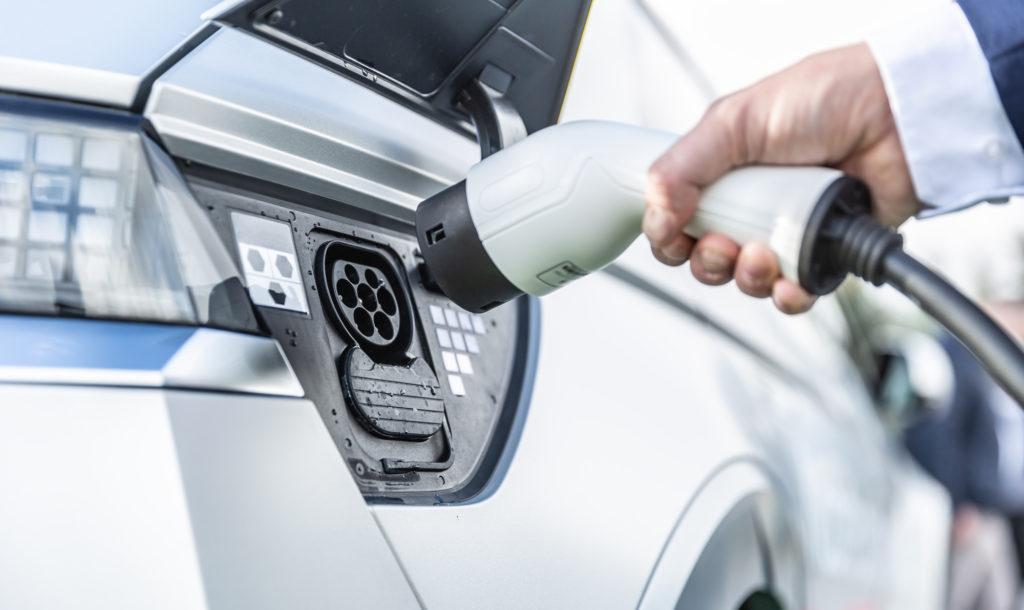
With the rise of global environmental concerns and the call for greener alternatives to conventional internal combustion engine vehicles, electric vehicles (EVs) have gained immense popularity. Converting a regular automobile into an EV is an intriguing prospect for many, not only for eco-conscious individuals but also for tech-savvy DIY enthusiasts keen on experimenting and personalizing their vehicles. One significant advantage of this DIY EV conversion is the supposed improvement in energy efficiency.
Determining Energy Efficiency
To understand how energy efficiency is enhanced through a DIY EV conversion, one must first familiarize themselves with energy efficiency. In a broader sense, energy efficiency is about achieving greater output while utilizing lesser inputs and optimizing available resources. This efficiency is evaluated for electric vehicles based on the distance covered per unit of electrical energy. It is generally measured in watt-hours per kilometer (Wh/km) or miles per kilowatt-hour (mi/kWh).
Determining the energy efficiency of a converted EV involves various factors. First, the total energy consumed by the vehicle needs to be measured, primarily referring to the energy used in moving the vehicle and the energy consumed by secondary systems like the air conditioner, music system, etc. Second, this energy consumption should be related to the distance covered to get a 'per mile' or 'per kilometer' energy usage figure. The lower this number, the higher the energy efficiency.
One could use an energy meter installed in the vehicle to measure the total energy usage. The readings from this meter can be divided by the distance covered (as shown by the odometer) to get the vehicle's energy efficiency.
How DIY EV Conversion Enhances Energy Efficiency
Contrary to popular belief, DIY EV conversions can be more energy-efficient than some factory-made EVs. This is mainly because of two factors – customization and weight reduction.
First, when a vehicle is converted into an EV on a DIY basis, every component can be handpicked to suit the desired efficiency levels. The owner can choose more efficient motors and better batteries and can even adjust the vehicle's settings to enhance efficiency.
Second, significant weight reduction is achieved during the conversion process. Most internal combustion engine parts, like the engine, the exhaust system, the fuel tank, etc., are replaced with lighter electric components like the motor and batteries. This weight reduction directly enhances the vehicle's energy efficiency as less energy is required to move a more lightweight car.
Moreover, a DIY-converted EV can also be made more efficient by incorporating energy recovery systems. These advanced systems recover energy that would otherwise be lost during processes like braking and convert it into electrical energy.
It must be noted, however, that while DIY conversion offers an opportunity to enhance energy efficiency, the actual results will largely depend on the care taken in choosing the right components and properly installing and configuring them. Professional help may be required to ensure optimum results.
In essence, DIY EV conversion holds promising potential in terms of energy efficiency. While it is not a solution for everyone, those with the right skills, knowledge, and enthusiasm can transform their conventional cars into highly efficient EVs, contributing little to a greener planet and potentially saving significantly on fuel costs in the long run.
You Can Save Money with DIY EV Conversion
Converting a traditional gasoline-powered car into an electric vehicle (EV) doesn’t just have environmental benefits. Potential financial advantages exist, especially through a Do-it-Yourself (DIY) conversion. In this section, we will look further into how DIY EV conversion can result in significant cost savings in fuel, tax credits, and maintenance costs. We will also provide an overall cost-savings analysis highlighting the cost-effectiveness of switching to EVs.
Savings on Fuel
One of the most noticeable ways you can save money with a DIY electric vehicle conversion is in fuel costs. With the rise in gasoline prices, fuel can be a significant monthly expense for many. When you convert a car to electric, you essentially bypass the need to ever go to a gas station again. By switching to electricity to power your vehicle, your fuel cost can decrease dramatically.
Electricity is generally cheaper than gas, giving electric vehicle drivers substantial savings over their gasoline equivalents. In most parts of the world, the cost per mile to fuel an electric vehicle is substantially lower than that of a gasoline-powered car. Even with fluctuations in electricity rates, you’re still likely to save money. Depending on how and when you charge your EV, you could save hundreds, even thousands, on fuel costs annually.
Savings from Tax Credits
It is also critical to consider the financial benefit of tax credits when you switch to an electric vehicle. Governments worldwide, specifically in the U.S. and Europe, are offering generous incentives and tax breaks to encourage more use of EVs in an effort to reduce carbon emissions. These incentives apply to new electric car purchases, but in certain regions, they can also apply to the costs of converting an existing gas-powered car into an electric vehicle.
These tax credits can significantly help to offset the EV conversion costs, making it even more financially appealing. While the availability and amounts can vary per region, the savings could significantly reduce the initial investment in an EV conversion, making this green option even more attractive.
Savings in Maintenance cost
Another significant financial benefit of converting your car to an electric vehicle is the savings on maintenance costs. The engines of traditional gasoline-powered cars consist of numerous parts that require regular maintenance and replacements, such as oil changes, coolant flushes, transmission servicing, and replacing timing belts, etc.
On the other hand, electric vehicle engines are much simpler, with far fewer parts that could wear out over time. Consequently, the ongoing expense of maintaining an electric vehicle is considerably less than maintaining a conventional car, translating to long-term savings on maintenance costs or those unexpectedly costly repairs.
Overall cost savings analysis
The cost to convert a gasoline-powered car into an electric vehicle can vary widely, depending on the type of car and the parts used in the conversion. The initial price might seem high, but it's crucial to look at it as an investment in the long-term savings.
When you factor in the savings from fuel costs, potential tax credits, and reduced maintenance expenses, the time it could take to recover your original investment in a conversion could be significantly shortened. Simply put, converting to an electric vehicle could lead to cumulative savings beyond your initial investment, potentially making the DIY EV conversion cost-effective in the long run.
The bottom line is that while electric conversion might require some upfront investment, the potential cost savings in fuel, tax credits, and maintenance expenses make the switch to an electric vehicle worth considering.
Safety Concerns for DIY EV Conversion

Before plunging into the electrifying world of EV (Electric Vehicle) DIY conversions, it is paramount to take cognizance of the safety challenges one might encounter. Converting a traditional gasoline-fuelled vehicle into an electric one consists of several integral steps that must be carefully executed. It is a complex and time-consuming process that includes removing the car's engine, exhaust system, and gas tank and installing batteries, electric motor, and charging system. However, the whole process can be hazardous without precaution and expertise.
Potential Safety Risks
The very first aspect we'll delve into is the potential safety risks associated with a DIY EV conversion. One of the most important risks is handling high-voltage electric components. Batteries, electric motors, and the charging system all carry a high voltage level and deliver substantial current. An accidental short circuit can not only damage your equipment but may also lead to serious injuries. Furthermore, mishandling of batteries, especially lithium-ion batteries, can lead to chemical leaks or explosive reactions, posing the risk of chemical burns and fires.
Another risk is associated with the structural modifications done to the vehicle during the EV conversion. This includes changes to accommodate batteries or the electric motor. If not done properly, these modifications can compromise the vehicle's structural integrity and cause accidents.
Lastly, without sufficient technical knowledge or understanding, one can misconfigure components leading to sub-optimal performance and even damaging critical components of the conversion, or the entire vehicle for that matter.
Safety Measures During Conversion
The magnitude of potential safety risks of DIY EV conversions certainly calls for strong safety measures during the conversion process. First and foremost, it’s essential to get the right training and skills for the electrical work involved in EV conversion.
Always disconnect the main high-voltage battery pack before working on the system components when dealing with high-voltage and high-current systems. Also, using appropriate safety gear like shock-resistant gloves, protective eyewear, and fire-resistant clothing is hugely beneficial.
As per the structural modifications, professional vehicle modification services are advised, as these services are well-equipped with the knowledge and tools to safely perform the changes required. Further, strictly following the installation instructions provided by component manufacturers can ensure that all the components work jointly and as intended.
Post-conversion safety measures
Now, addressing safety measures post-conversion: it is strongly recommended to have an inspection performed by a trained professional after the conversion. Such an inspection can identify potential issues and mitigate safety risks.
Furthermore, ongoing maintenance should be performed to keep the vehicle safe. This should include regular inspection of high voltage connections for loose or corroded joints, testing insulation resistance to prevent electric shock, and periodic examination of structural modifications for possible wear and tear.
Regarding safety, the converted vehicle should also have warning signs indicating the presence of high voltage to aware anyone working on the vehicle of the potential risks. Finally, in any EV - DIY converted or factory-made, the best safety measure is the education and awareness of the driver about the uniqueness of an electric vehicle. Understanding the operation, limitations, and maintenance requirements of the EV is crucial for maintaining its safety over the long term.
Real-world Examples of Successful DIY EV Conversion
The growth of electric vehicles (EVs) is credited to an increased concern for the environment, a desire for non-dependency on finite resources, and a relish for the latest technology. Over the years, many car enthusiasts have taken on the task of converting standard gas-powered automobiles into full-functioning electric vehicles. This section will explore real-world examples of successful DIY (Do-It-Yourself) EV conversions. We will focus on both case studies of the most notable conversions and testimonials and reviews from those who successfully executed these conversions.
Case Studies
Our first case study involves a technology entrepreneur from Silicon Valley who successfully converted his Porsche into an electric vehicle in 2008. After researching and buying all the necessary parts, he could mechanically and electrically engineer his car into a functional EV. The conversion involved the removal of the engine, gearbox, exhaust system, and fuel tank. These were replaced with an electric motor, controller, charger and 16 kWh lithium-ion battery pack. The transfigured car was much quieter, accelerated faster, and moved at a top speed of 150 mph. Moreover, it had an impressive range of 200 miles on a single charge.
In another instance, a retired engineer from Australia employed his engineering skills to convert his 1966 Volkswagen Beetle into an electric car. Using a DIY kit purchased online, he replaced the traditional engine with an electric motor and controller and installed a battery pack in the car's trunk. The result was a classic "Bug" that no longer required gasoline emitted zero emissions, and offered a range of over 100 miles on a full charge.
One more example hails from Japan, where an Okayama University of Science student team converted a 1992 Mazda MX-5 into a fully functioning electric vehicle. They removed the car's original engine and replaced it with an electric motor and a 20 kWh LiFePO4 battery pack. Despite the heavy battery pack, the car still maintained its initial lightweight characteristic. Ultimately, the EV could run for approximately 160 miles on a single charge.
Testimonials and Reviews
Among the numerous testimonials and reviews of successful DIY EV conversions, the consistent theme seems to be the significant decrease in operating cost, reduction in pollution, and satisfaction derived from the conversion process.
One testimonial comes from a Houston-based electrician who converted his family’s second car, a Toyota Corolla, into an electric vehicle. He attests to its efficiency, reporting that charging only about twice a week is a significant reduction compared to the previous daily gas fill-ups.
In another review, a Colorado-based IT professional, who converted his old Ford pickup truck into an EV, indicated that apart from the significant decrease in pollution, the vehicle's performance improved with smoother acceleration and quieter operations.
By and large, the feedback collected from successful DIY EV converters testifies to the numerous benefits of EV conversion. However, they also note that the process requires a certain degree of mechanical knowledge, intensive research, and perseverance. This trend in DIY conversions suggests an increased interest in sustainable transportation. It not only provides individuals with the satisfaction of combining environmental responsibility with their love for automobiles but also opens up fresh avenues for a more eco-friendly future.
The future of DIY electric vehicle (EV) conversion is an exciting and burgeoning field. As technology advances and the world moves towards sustainable and renewable energy resources, the interest in electric vehicles is at an all-time high. However, buying new EVs remains prohibitive for many potential purchasers. This has increased the market for converted EVs, where conventional fuel-powered cars are transformed into electric vehicles. Considering these factors, let's ponder upon the future possibilities in DIY EV conversions.
Predicting Future Trends
The future of DIY EV conversion largely depends on several key factors. Firstly, advancements in electric vehicle technology are bound to make conversions more efficient and cost-effective. As more people become skilled in the assembly and maintenance of electric vehicles, we may see an uptick in the number of converted EVs on the road.
On the environmental front, as countries institute legislation to minimize carbon emissions, the demand for new and converted EVs will most likely surge. Communities wishing to reduce their carbon footprint may increase the practice of retrofitting cars instead of buying new ones. Meanwhile, enthusiasts captivated by the prospect of transforming their gas-guzzling vehicles into clean electric machines are also driving growth in the DIY EV conversion space.
Finally, the capacity for customization in DIY EV conversions is another factor driving interest in this field. Unlike traditional vehicle manufacturing, DIY conversions allow for a high degree of personalization, enabling the owner to design their EV to their liking, including a larger battery for an extended range or refining the control systems for a smoother ride.
READ: Can Electric Vehicles Tow?
Emerging Technologies and Their Impact
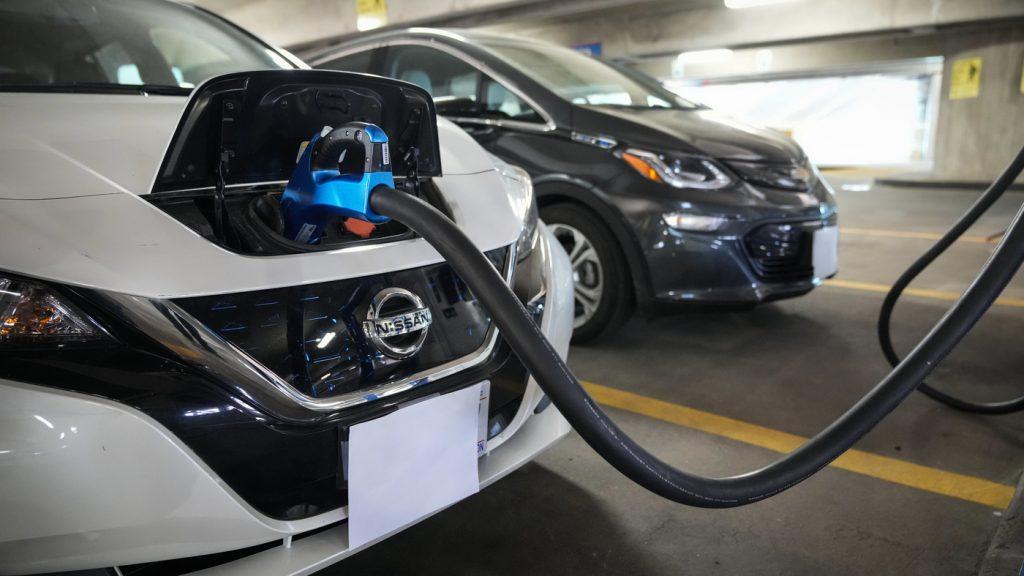
Emerging technologies are playing a significant role in shaping the future of DIY EV conversion. As these technologies continue to develop and mature, we can expect a significant impact on the efficiency, cost-effectiveness, and accessibility of EV conversions.
Solid-state batteries, a new type of lithium-ion battery that replaces the liquid electrolyte with a solid version, could be a game-changer. They are touted to have a higher energy density, thus allowing EVs to travel farther on a single charge. Their safer operation and potential for faster charging are also attractive points.
Wireless charging technology is another exciting development that could significantly change the landscape for converted EVs. Wireless charging can make the user experience more seamless and convenient by eliminating the need for plug-in chargers, encouraging more people to convert to EVs.
Furthermore, advancements in artificial intelligence and machine learning could significantly impact the DIY EV industry. Machine learning algorithms can optimize the energy consumption of EVs, maximizing their range and efficiency. AI can also aid in the diagnostic and maintenance aspects of converted EVs, further making self-conversion more attractive.
In conclusion, technologically advanced, cleaner, and more sustainable, the DIY EV conversion promises an exciting future as more people realize its potential. As technology develops, the future will see more efficient and advanced converted EVs that minimize our environmental impact and reduce our dependence on fossil fuels.
